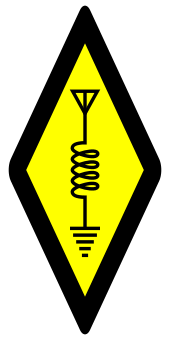PACTOR
PACTOR is a radio modulation mode used by amateur radio operators, marine radio stations, and radio stations in isolated areas to send and receive digital information via radio. A robust network of PACTOR stations has been established to relay data between radio stations and the Internet, extending Internet access to sea based and other isolated users.[1] PACTOR utilizes a combination of simple FSK modulation, and the ARQ protocol for robust error detection and data throughput. Generational improvements to PACTOR include PACTOR II, PACTOR III, and PACTOR IV which are capable of higher speed transmission. Pactor modes other than level 1 (P1) are not open source and therefore cannot be decoded by anyone who hasn't invested in a proprietary modem.
History
PACTOR (Latin: The mediator) was developed by Special Communications Systems GmbH (SCS) and released to the public in 1991. It was developed in order to improve the reception of digital data when the received signal was weak or noisy. PACTOR is an evolution of both AMTOR and packet radio; its name is a portmanteau of these two technologies. PACTOR combines the bandwidth efficiency of packet radio with the error-correction (CRC) and automatic repeat request (ARQ) of AMTOR. Amateur radio operators were instrumental in developing and implementing these digital modes. PACTOR is most commonly used on frequencies between 1 MHz and 30 MHz.
Current uses
PACTOR is a set of standardized modes used by Amateur and Marine radio operators for FSK radioteletype transfer of digital information over shortwave bands.
PACTOR radio equipment consists of an HF transceiver, a computer and a terminal node controller. Software running on the computer drives the terminal node controller. The most commonly used Amateur program for this purpose is Airmail.
PACTOR is used by Amateur Bulletin Board operators to exchange public messages, and open conversations across the world. It is also used by the NTSD (digital) portion of the ARRL's National Traffic System (NTS) to pass digital ARRL Radiograms. Newer PACTOR modes are used to transfer large binary data files and Internet E-mail, particularly via the Winlink global E-mail system.
The SailMail network transfers E-mail on behalf of Marine stations.[2]
Technical characteristics
HF data transmission by radio amateurs uses medium power (100 watts) over long distances (100 to 4000 km). Effective radio-frequency communications over such long distances over hostile radio paths require that special attention be paid to the rate at which data is repeated and error correction. To reduce the amount of data sent, on-line data compression is utilized, along with memory ARQ error correction. By combining these open technologies, PACTOR achieves a power efficiency much greater than that of older protocols such as packet, AMTOR, or RTTY. PACTOR has a very narrow waveform and occupies the same band space as analog 300 baud packet.
PACTOR utilizes very rapid Time-Division Duplexing, giving PACTOR communications its characteristic cricket-like chirping sound when listened through a single-sideband receiver.
Depending on the version of PACTOR protocol used and the radio-frequency conditions, PACTOR transmission speeds range from 20 to 5200 bits per second (bit/s; net rate) or 9000 bit/s gross rate utilizing speed 10 (32-QAM).[3][4]
The ITU Emission Designators:
- Pactor I is 304HF1B.
- Pactor II is 375HJ2D (at a symbol rate of 100 symbols per second).[5]
- Pactor III is 2K20J2D (at a symbol rate of 100 symbols per second).[5][6]
- Pactor IV is 2K40J2D (at a symbol rate of 1800 symbols per second).[4]
Criticism
Cost is an important consideration when choosing PACTOR equipment. PACTOR I is open technology and modems can be purchased in the $50-$150 price range and are in ample supply. Three enhanced modes, PACTOR II, PACTOR III and PACTOR IV, are much faster but have been kept proprietary by the German company, SCS, that developed them. As a result, SCS is the only source for modems capable of these modes. The price of these modems--in some cases as much as an HF radio--discourage many potential users.[7] As the data is compressed, and the decompression algorithm is not publicly known, the contents of PACTOR transmissions are unreadable to anyone without a PACTOR capable terminal node controller.
See also
References
- ↑ "A Brief Guide to the Elements of Winlink 2000". Winlink 2000. Retrieved 1 September 2010.
- ↑ "SailMail". SailMail Email Service for Yachts via Iridium, Inmarsat, or SSB. Retrieved 1 September 2010.
- ↑ "PACTOR News". More on comparisons of digital HF modes. Retrieved 1 September 2010.
- 1 2 "PACTOR IV". Technical details on the Pactor-IV protocol. Retrieved 1 December 2011.
- 1 2 "ITU-R M.1732-1" (PDF). Characteristics of systems operating in the amateur and amateur-satellite services for use in sharing studies (2012).
- ↑ "ITU-R M.1798-1" (PDF). Characteristics of HF radio equipment for the exchange of digital data and electronic mail in the maritime mobile service (2010).
- ↑ "Linux.com". Concerned hams question amateur radio choice of closed code and controller. Retrieved 21 August 2016.
- Steve Ford, WB8IMY (2001). "Chapter 5 - PACTOR". ARRL's HF digital handbook. Newington, CT: The American Radio Relay League. ISBN 0-87259-823-3.
External links
- http://www.scs-ptc.com/pactor/pactor
- http://www.p4dragon.com/en/PACTOR-4.html
- http://www.winlink.org/
- http://www.airmail2000.com/
